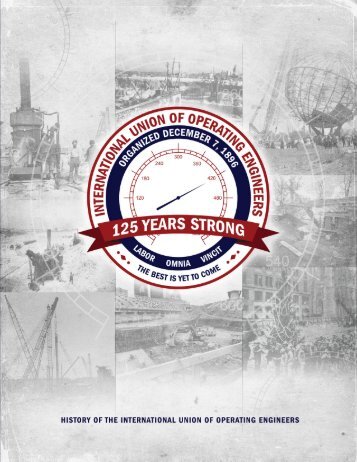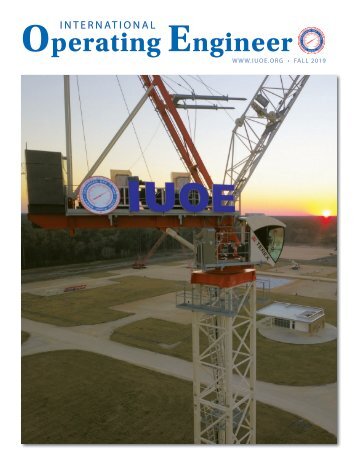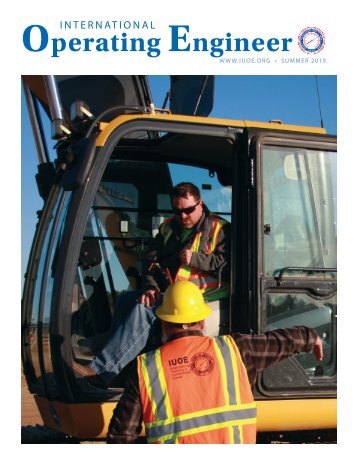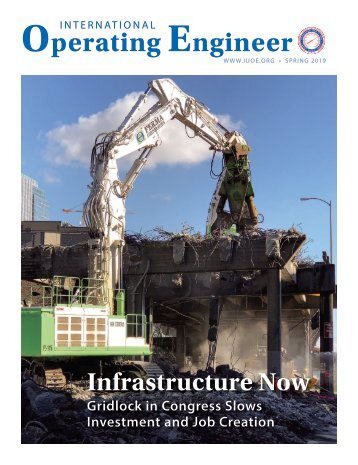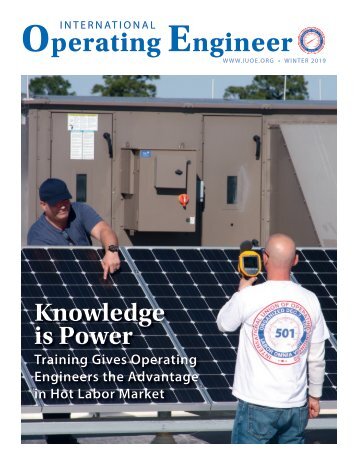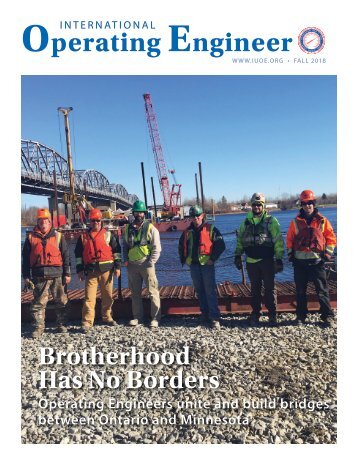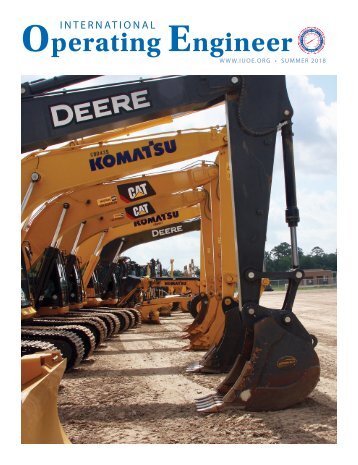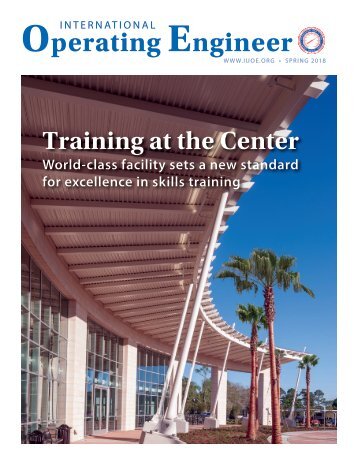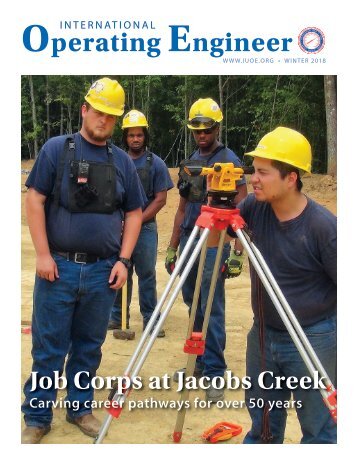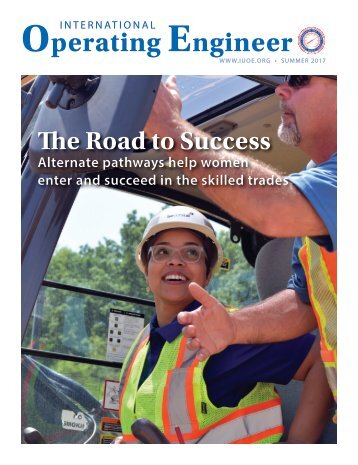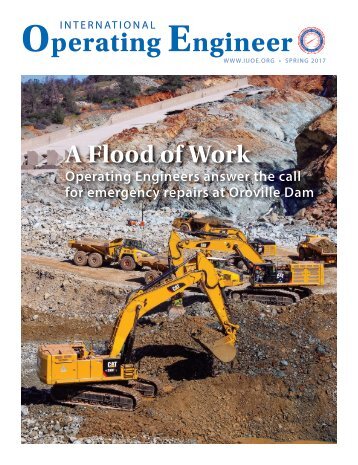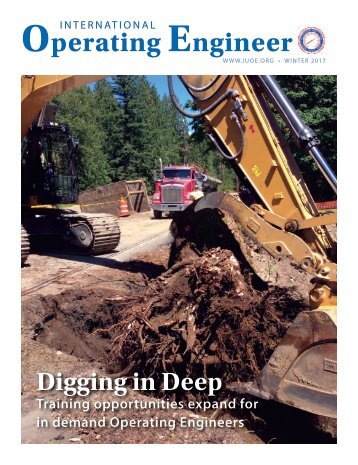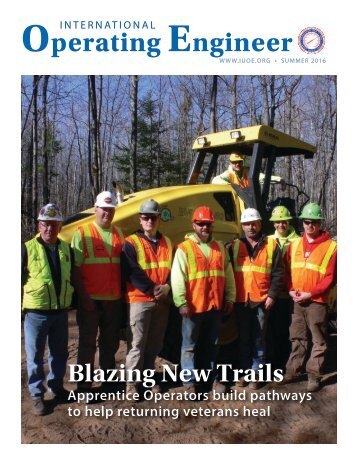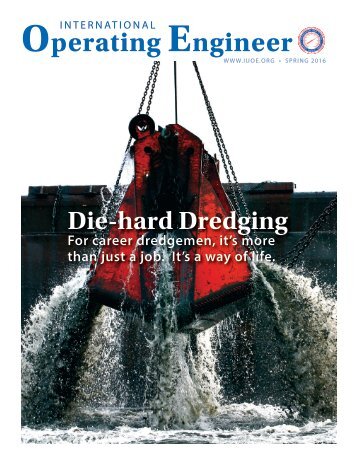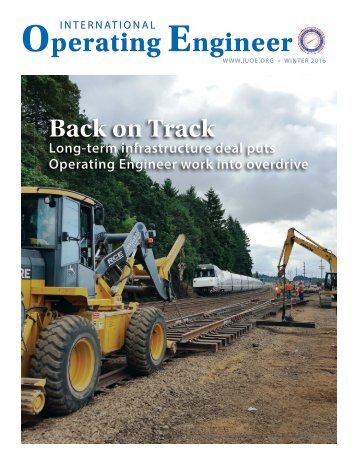125 Years Strong – An IUOE History
- Text
- Wwwiuoeorg
- Vincit
- Omnia
- Engineer
- Convention
- Membership
- Locals
- Operating
- Engineers
INTERNATIONAL UNION OF
INTERNATIONAL UNION OF OPERATING ENGINEERS were dismal, at best, as even their employers – except in a few cases – considered engineers to be on the same levels of skill and responsibility as common laborers. What’s more, engineers in the United States and Canada were wholly unorganized in any movement to secure better conditions for themselves, except in a few cities in which societies of steam engineers existed, although all were without collective goals or mutual affiliations. (1) “There was no strong bond of attachment arising from the common interests of their members and of those outside DENVER WAS ISSUED FIRST CHARTER After the National Union of Steam Engineers (N.U.S.E., forerunner of the I.U.O.E.) was organized in December 1896 and then chartered by the American Federation of Labor on May 7, 1897, the union granted its first charter to the engineers of Denver, Colorado, as Local No. 1 on June 23, 1897. The steam engineers of Denver had been organized before associating with the N.U.S.E.; that local, as with many of the national union’s earliest locals, was an independent affiliate of the American Federation of Labor, with which it was registered as Engineers Protective Union No. 5703. The oldest written record of Local 5703 is a one-page financial statement for the first quarter of 1890, and the oldest membership list of the local is in a financial ledger from 1892 that contains the names of 62 individuals. Brother John H. Barlow, president of Local 5703 in 1896, recalled in a letter in the March 1918 issue of The International Steam Engineer how his local was officially chartered: “In 1892, a few of us engineers got together to talk over the best way in which to form a union. … We determined to obtain a charter from the Secretary of State, which, as it was for non-commercial purposes, cost us but . But before the expiration of the term for which the charter was issued, we obtained a charter from the (American Federation of Labor) direct.” Local No. 1 charter member Brother John M. Smales, who is listed in the Local 5703 ledger from 1892, served as an N.U.S.E. delegate to the American Federation of Labor and represented Local 1 at the national union’s first convention in December 1897. He served as the N.U.S.E.’s first secretary and its first elected treasurer. of them who practiced the calling,” an article in the September 1912 International Steam Engineer recollected, “and no organization existed capable of materially helping them to better pay, shorter hours.” The abysmal working environments and meager wages that plagued construction and stationary engineers into the late 1800s were, in large part, tied to the evolution of the engineering trade itself. It was those difficult conditions that the original organizers and members of the I.U.O.E., each of whom were skilled at operating the dangerous steam boilers or maintaining the engines and engine power assemblies of the time, were determined to improve through the creation of a single, national union. With the invention of the original steam engine by Thomas Savery in 1698 and its modern successor by James Watt in 1775, the electric generator by Michael Faraday in 1831 and the gasoline motor by Jean J. Lenoir by 1859, the development of electric, steam, internal combustion and pressure engines advanced rapidly, as well. In turn, the profession of operating and maintaining engines and power assemblies was likewise created and advanced and, long before 1896 in the United States, became an established occupation separate from all other labor crafts. Early on, nearly all power equipment was custom-made for the particular job on which it was to be used, requiring the steam engineer to be able to operate, repair, assemble, dismantle, maintain and transport his equipment. What’s more, as the use of steam engines and their technology significantly increased as the 19 th Century progressed, so too did the need for skilled operators. (1) Portable engineers – distinct from stationary engineers operating and maintaining static power and mechanical plants – came about after William T. Otis received a patent for the steam shovel in 1839, the first of which were “partial-swing” machines, as the boom could not rotate through 360 degrees, and were built on a railway chassis on which the boiler and engines were also mounted. In addition to an engineer operating the hoisting and swinging action, a fireman feeding the boiler and a crewman or “boomcat operator” controlling the separate crowd engine in the boom were needed to operate a shovel. Next, the invention of the first practical hoisting engine in 1875 introduced the new hoisting-engineer trade to the construction industry. With the steam hoist, it became possible to construct taller buildings, ultimately ushering in the era of the skyscraper. It was those stationary, portable and hoisting engineers who would eventually organize and establish the N.U.S.E. But in the decades before they finally came together in 1896, the International Union of Steam Engineers Secretary-Treasurer Robert A. McKee sits at his desk in one of the union’s first offices in Brooklyn, New York, in 1904 or 1905. LOGO CONTINUALLY FEATURES GAUGE, LATIN During the first convention of the National Union of Steam Engineers in 1897, officers and members of the new organization chose the steam gauge as the union’s official emblem and included it within the union’s first logo. The gauge – as was the inclusion of “Steam” in the union’s name – was chosen because steam was essentially the only source of power at that time, and it symbolized all types of engineers. When first adopted, the needle on the gauge in the logo pointed to 80 pounds per square inch (psi). For unknown reasons, sometime during the late 1920s or early 1930s the union’s General Executive Board changed the gauge reading to 420 psi in a new design of the logo. As on the current logo, the original emblem contained the phrase “LABOR OMNIA VINCIT,” which is Latin for “WORK CONQUERS ALL.” LABOR OMNIA VINCIT WORK CONQUERS ALL
- Page 2: LABOR OMNIA VINCIT WORK CONQUERS AL
- Page 6: INTERNATIONAL UNION OF OPERATING EN
- Page 12: INTERNATIONAL UNION OF OPERATING EN
- Page 16: INTERNATIONAL UNION OF OPERATING EN
- Page 20: INTERNATIONAL UNION OF OPERATING EN
- Page 24: INTERNATIONAL UNION OF OPERATING EN
- Page 28: INTERNATIONAL UNION OF OPERATING EN
- Page 32: INTERNATIONAL UNION OF OPERATING EN
- Page 36: INTERNATIONAL UNION OF OPERATING EN
- Page 40: INTERNATIONAL UNION OF OPERATING EN
- Page 44: INTERNATIONAL UNION OF OPERATING EN
- Page 48: INTERNATIONAL UNION OF OPERATING EN
- Page 52: INTERNATIONAL UNION OF OPERATING EN
- Page 56: INTERNATIONAL UNION OF OPERATING EN
- Page 60:
INTERNATIONAL UNION OF OPERATING EN
- Page 64:
INTERNATIONAL UNION OF OPERATING EN
- Page 68:
INTERNATIONAL UNION OF OPERATING EN
- Page 72:
INTERNATIONAL UNION OF OPERATING EN
- Page 76:
INTERNATIONAL UNION OF OPERATING EN
- Page 80:
INTERNATIONAL UNION OF OPERATING EN
- Page 84:
INTERNATIONAL UNION OF OPERATING EN
- Page 88:
INTERNATIONAL UNION OF OPERATING EN
- Page 92:
INTERNATIONAL UNION OF OPERATING EN
- Page 96:
INTERNATIONAL UNION OF OPERATING EN
- Page 100:
INTERNATIONAL UNION OF OPERATING EN
- Page 104:
INTERNATIONAL UNION OF OPERATING EN
- Page 108:
INTERNATIONAL UNION OF OPERATING EN
- Page 112:
INTERNATIONAL UNION OF OPERATING EN
- Page 116:
INTERNATIONAL UNION OF OPERATING EN
- Page 120:
INTERNATIONAL UNION OF OPERATING EN
- Page 124:
INTERNATIONAL UNION OF OPERATING EN
Inappropriate
Loading...
Mail this publication
Loading...
Embed
Loading...
International Operating Engineer
HEADQUARTERS
INTERNATIONAL UNION OF OPERATING ENGINEERS (IUOE)
1125 17th Street, NW
Washington, DC 20036
202 429-9100
CONTACT US
Send us an email here.
©2010 International Union of Operating Engineers. All Rights Reserved.|Terms Of Use|Privacy Statement|Sitemap

